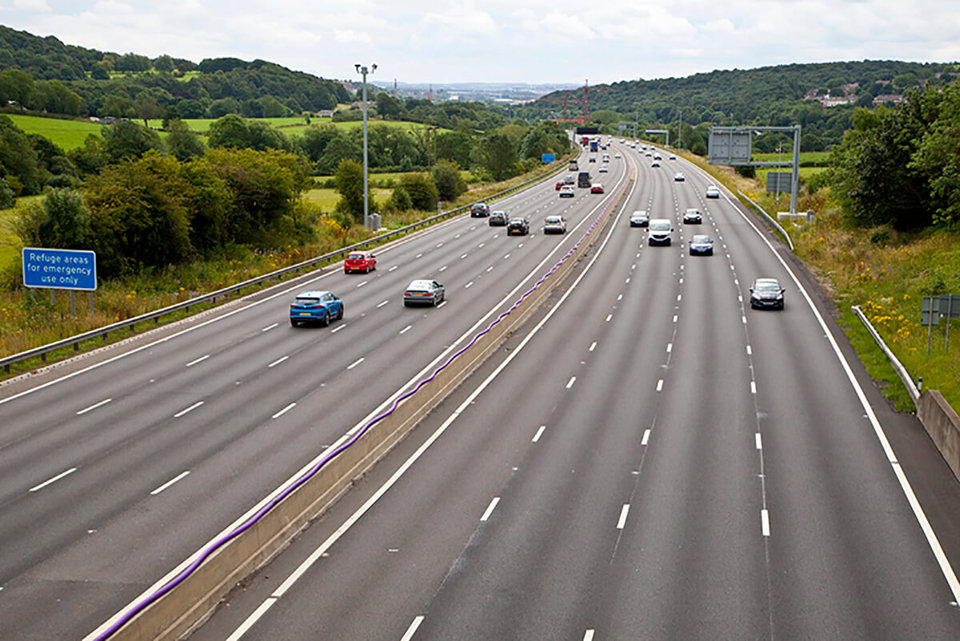Company car and van drivers will face a fee of up to £1.50 to drive along a stretch of the A14, according to the Highways Agency.
It’s anticipated that charges will apply between 6am and 10pm, seven days per week, while HGVs will pay double that amount.
However, roads minister Stephen Hammond said that the charges had yet to be finalised and could change before the expected opening of the road by 2020.
Vehicles using the tolled section of the road during charging hours will be identified using automatic number plate recognition cameras, removing the need for toll plazas and the need to queue in order to pay.
The Highways Agency says it wants the payment of tolls to be quick, simple and reliable, and will provide road-users with a number of online, on-account, or physical payment options.
There will also be a limited number of exemptions to tolls, including emergency service vehicles and vehicles exempt from vehicle excise duty on grounds of disability. Foreign-registered vehicles will not be exempt from tolls.
Toll revenue is an essential component of the £1.5 billion road improvement scheme between Cambridge and Huntingdon.
The plan is for a new stretch of A14 between Ellington and Swavesey, and a widening of the A1 between Brampton and Alconbury
About 20% of the cost of improvements – £300m – is expected to be raised by tolling the 12-mile section of new road between the Ellington and Swavesey junctions, but tolls will not be used on the A14 to the east of Swavesey or any part of the A1.
David Bizley, technical director of the RAC, told Fleet News that piecemeal actions such as this were unwelcome and not a solution to the problem of serious congestion.
He said: “The decision to create a toll on the A14 may well be particularly unpalatable for businesses due to the absence of an alternative route, such as exists with the M6.”
Most through-traffic is expected to use the toll road as this will provide the fastest and most economical route.
However, the Highways Agency said there are a number of alternative routes that are likely to be used by local traffic and a small proportion of through-traffic.
Light vehicles will be able to use the de-trunked route of the former A14 through Huntingdon and a short length of Brampton Road.
Heavy traffic will have two non-tolled alternatives: either via the A1 and the A428 from St Neots to Cambridge; or via the county A-roads through St Ives and the northern outskirts of Huntingdon.
‘Fair that drivers make contribution’
The use of tolls to finance major highway infrastructure projects is not new in Britain and is the means by which the Queen Elizabeth Bridge at Dartford, the M6 Toll, and the Second Severn Crossing were all funded.
Not every new road project needs to be funded in this way, but because of the scale and cost of the A14 scheme the Government believes it is fair that road users should make a direct contribution towards the cost of improvement.
However, with motorists already paying £47bn a year in motoring taxes, not everybody agrees. Bizley said: “Tolls need to be instead of, rather than on top of these levies.
“If the Government wants to charge for motorists to drive on roads, then this needs to form part of a review and rebalancing of the different forms of motoring tax in general.”
Professor Stephen Glaister, director of the RAC Foundation, added: “A piecemeal approach to tolling – on top of existing taxation – risks creating a postcode lottery of charges.”
The Highways Agency is asking the public what they think about plans for the scheme between Cambridge and Huntingdon.
The consultation, which closes on October 13, comes on the back of a £28bn commitment from the Government to improve the national network of motorways.






















gary - 25/09/2013 15:39
Wat a rip of wat do we pay road tax for